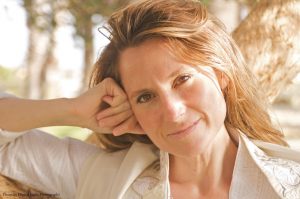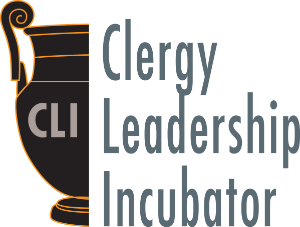How Radical Ritual Empowers a New Spiritual Community-Part 4
How Radical Ritual Empowers a New Spiritual Community-Part 4
Rabbi Sid’s Editor’s Note: The DNA of CLI is transformational change, both of the American rabbinate and, more importantly, of the kinds of spiritual communities that can engage the passion and interests of 21st century Jews. Rabbi Lori is a graduate of CLI’s inaugural cohort. The Open Temple was incubated when Rabbi Lori was a CLI Fellow. Her creative re-imagining of all things Jewish should be an inspiration to others. This article, which we will publish in 5 installments in successive months, is the longest we’ve ever published. The article also sets the stage for CLI’s co-sponsorship of the Kol Tefillah Conference, scheduled to take place January 19-21, 2024 at Temple Beth Am in Los Angeles.
Kol Nidre begins a 25-hour near-death experience. And if we are to be blessed with what Rachel Adler calls  “a death of integrity,” our cycle into it will resemble those 25 hours. The objective of Yom Kippur is not self-abnegation; rather, it is to most fully become oneself. By activating ritual space through many different inroads, participants find their unique path in deepening their Jewish journey and, hopefully, continuing down this road for all the days of their life.
“a death of integrity,” our cycle into it will resemble those 25 hours. The objective of Yom Kippur is not self-abnegation; rather, it is to most fully become oneself. By activating ritual space through many different inroads, participants find their unique path in deepening their Jewish journey and, hopefully, continuing down this road for all the days of their life.
At Open Temple, our Yom Kippur Day services are an urban retreat. We are fortunate to be located in a house that is adjacent to the Electric Lodge and, since our founding, we have had a close collaboration with that performance space. The Electric Lodge is an incubator for the arts and the environment. It serves Venice and surrounding communities by hosting multi-disciplinary cultural arts, specialized arts workshops, health/fitness classes, and opportunities for civic engagement. We regularly rent space from the Electric Lodge for our services and other large gatherings of our community and the association with an institution known for hosting all manner of cultural arts, has given Open Temple additional cache in the Venice community.
Yom Kippur day begins with a one-hour guided meditation in the Electric Lodge dance studio. When participants emerge, our campus is filled with activities throughout the day – from labyrinth walks in our labyrinth modeled after the walls of Jericho, to goat yoga. And of course, worship services. Hours and hours of them. Just because people are not orthodox doesn’t mean that their souls don’t hunger for this immersive experience. In fact, I have found that many people approach me at the end of the experience saying “that was the easiest Yom Kippur fast I have ever experienced.”
We Belong to the Stars
Ne’ilah feels like the end of a hurricane. If we are lucky enough to have lived through one that gently topples trees and debris, when we emerge, the air is fresh and the ground is cleansed. The world around us feels renewed. At the close of Yom Kippur, our bodies survived their brush with death, and we walk into the world with a sense of fresh optimism. We dedicate ourselves to doing life differently because, for 25 hours, we embodied how we are just one breath away from its end.
We leave the holy space of time that is Yom Kippur, and rush to perform the mitzvah of building a Sukkah – a temporary structure symbolic of the temporal nature of life. We move from “the sabbath of sabbaths” i.e., Yom Kippur, when we dwelled in a “palace in time,” per Abraham Joshua Heschel’s famous essay on Sabbath, and immediately find form for this in space by constructing the framework of a sukkah. On that first night, post Yom Kippur, our community lingers at break-the-fast, and we lay our hands on constructing this framework together. In the words of the sages “we do not complete the task; but, neither shall we desist from it.”
Sukkot at Open Temple has taken many forms through the years. Our Sukkah pays special attention to vertical decorations in order to draw those who enter to look up, as there are stars above, whether or not we can see them. These are the same stars that were seen by our patriarch, Abraham, when he hoped that his offspring would “as numerous as the stars”. Our sukkah invites us to “look up” and, as we do, our booths become portals, or time machines. Inviting our ancestors into our sukkah is not just an exercise in memory, but in physics, as the stars above emit light from thousands, millions, even perhaps, billions of years ago.
“Sukkot on the Canal Farm” was our inaugural event to build community. We build an enormous sukkah in the Venice Canals and fill it with music, community and enchantment. Reading nooks beneath trees inviting children into the love of learning; local bands playing in our sukkah with drums in the center, inviting all to play; we have a pumpkin patch for children to connect the harvest festival with the secular observance of Halloween. We have built a sukkah on a barge and sailed it down the canals alongside dozens of kayaks for a floating water festival, in the tradition of Simchat Beit haShoeivah, our tradition’s water libation ceremony, in which our ancient ritual acknowledged the frailty of our lives and its reliance on water. The ritual has an air of the whimsical so, at Open Temple, King Solomon himself showed up on a paddle boat, reciting verses from Ecclesiastes beneath a ripe, full moon, alongside fire jugglers on bridges, traveling minstrals on docks and water games as we paddled through prayer experiences. For the past few years, Sukkot on the Farm invited families to Open Temple House where we have a petting zoo and feature Bark and Meow Mitzvahs. Co-Creators (our name for congregants, as we want us all to create together) of all ages bring their dogs, cats, hamsters, bunnies and even a marmot. Our love of animals is inspired by Mishnah Sukkot, which graphically describes the sacrifices of Temple worship; we transvalue this ancient ritual into a love and reverence for our animal companions, who teach us so deeply about love.
Eating Sukkot
Throughout the week of Sukkot, Open Temple hosts meals in our sukkah, each with a unique theme. We have hosted Death over Dinner meals, where we discuss life’s evanescence and invite representatives from Hillside Mortuary to introduce the uninitiated to concepts of living wills, health care proxy and end of life decisions. Our Sukkot dinners also feature a re-integration circle for those who have practiced or explored psychedelics in their lives. Our understanding is that Sukkot is a time to peer into the eternity beyond the stars and our objective is to invite those who peer beyond Judaism to integrate their experiences back into a Jewish framework. As October is Breast Cancer Awareness Month, our Rosh Hodesh meal hosts Sharsheret, the Jewish breast and ovarian cancer organization. Survivors of women’s cancers share their knowledge and experience with others who identify as women. At all of our meals, we extend the imperative as expressed in Parshat Re’eh, Deuteronomy 16:14, “You shall rejoice in your festival, with your son and daughter, your male and female slave, the family of the Levite, the stranger, the fatherless, and the widow.” Open Temple is radically inclusive. All are welcome.
Open Temple House’s perimeter is planted with fruits, herbs and vegetables, many of which harvest in the autumn. Our meals are paired with passion fruit, pomegranates, lemon verbena, rosemary, and anise root, all of which proliferate at this time of year. The offering of our local harvest onto our picnic tables, positioned around a fire table, express the symbolic journey of our tradition – from the Temple in Jerusalem, where animal sacrifice was practiced, to the holy alter of the shared table, where Torah is learned. Each meal is paired with a teaching – from earth-based Judaism, where a former wiccan, now rabbi, invites in the matriarchs and divine feminine – to the celebration of machlochet l’shem shamayim, where people across the political spectrum are invited to learn with one another, irrespective of their ideological differences in order to discover common ground through Torah study. The concepts which a sukkah symbolizes: life’s fragility, radical inclusivity, hiddur mitzvah (the beautification of the mitzvah) fill our sukkah with a liveliness and helps to establish Open Temple as a center for spiritual transformation that is available to all throughout the year.
___________
Rabbi Lori Shapiro is the founding rabbi of The Open Temple in Venice, CA. She developed the model as a Fellow in Cohort 1 of the Clergy Leadership Incubator (CLI) and then continued working on it when participating in the Open Dor Project. She and her husband, Dr. Joel Shapiro, live in the Venice canals with their two daughters and labradoodle.

